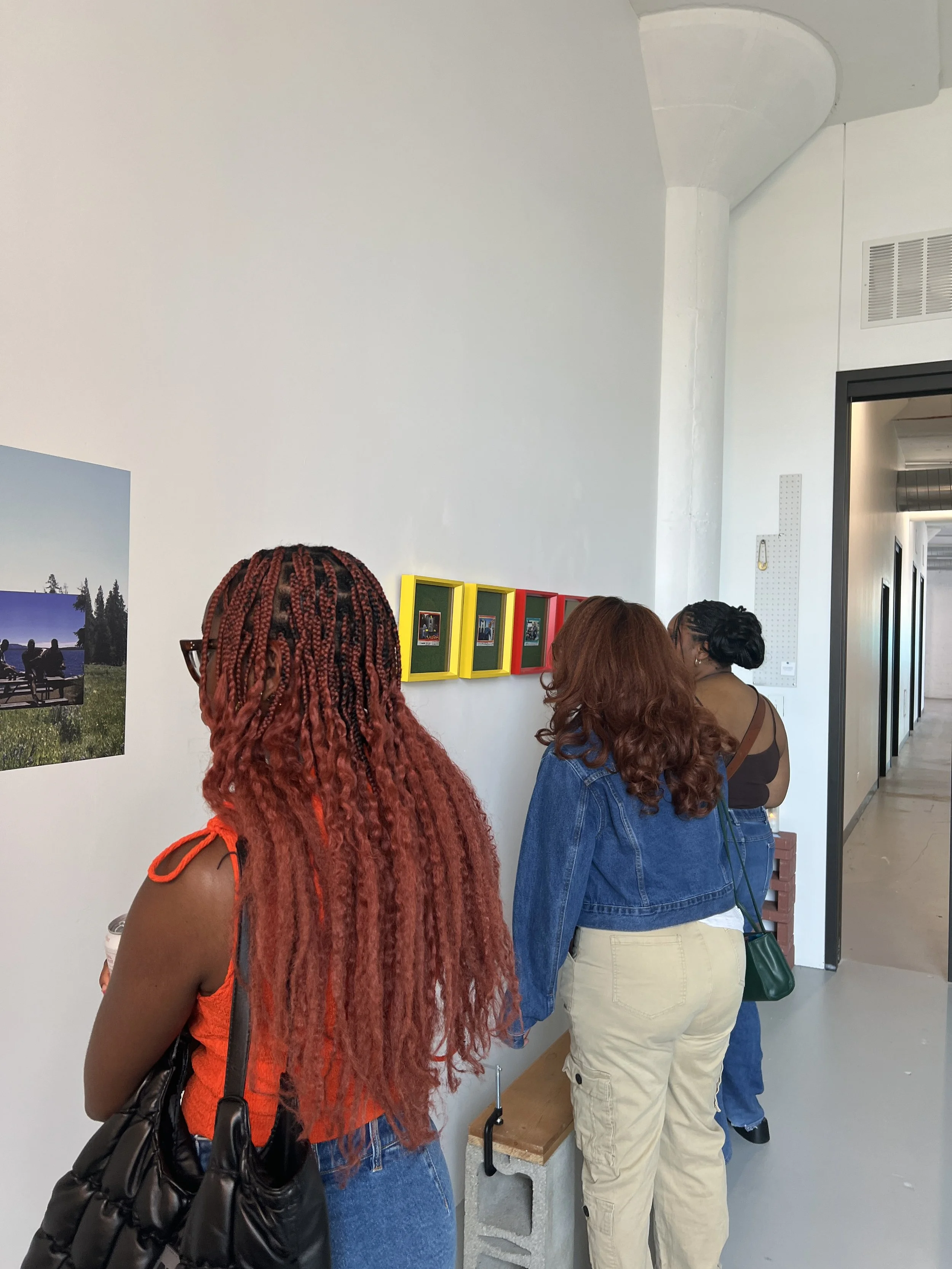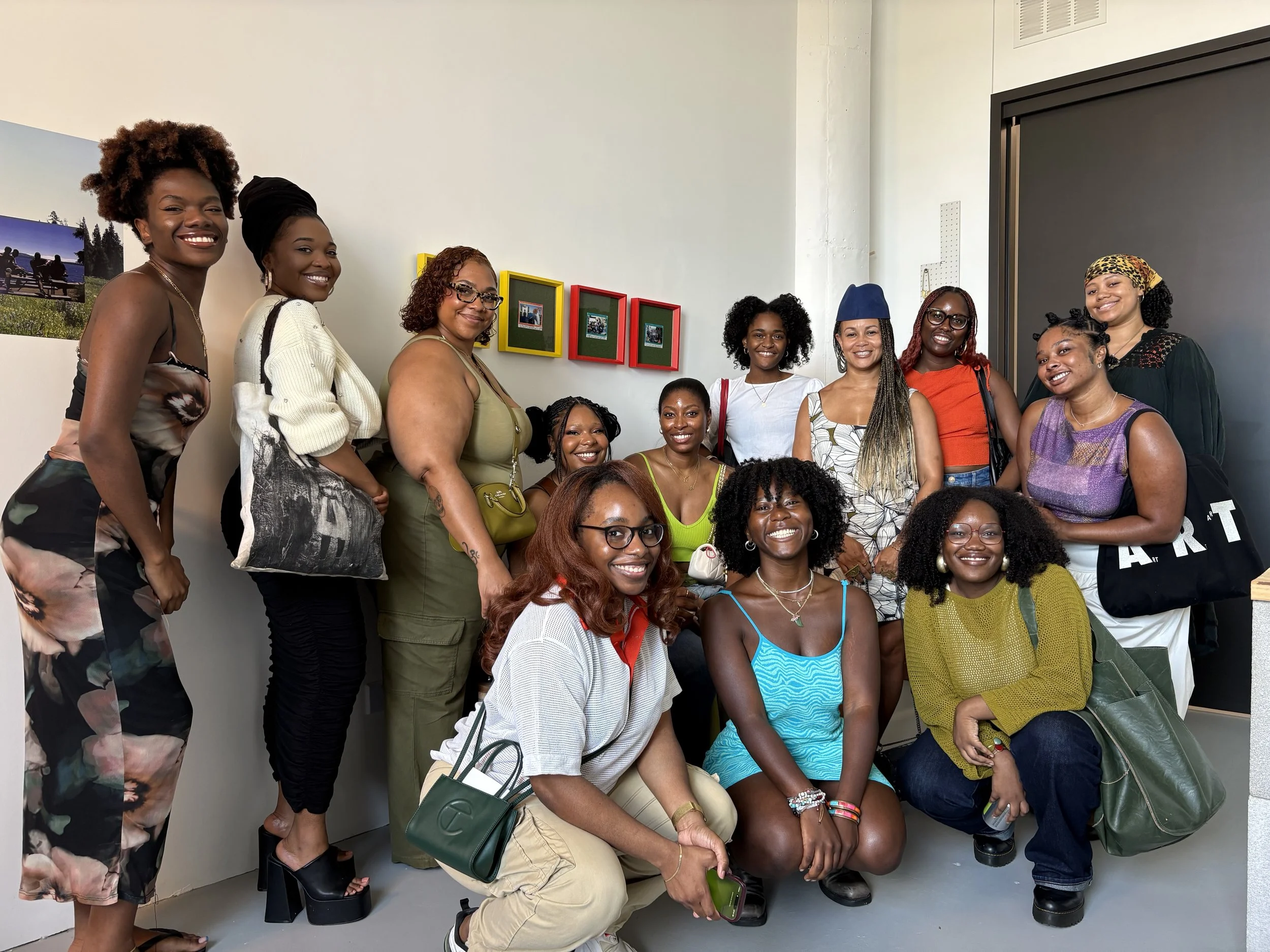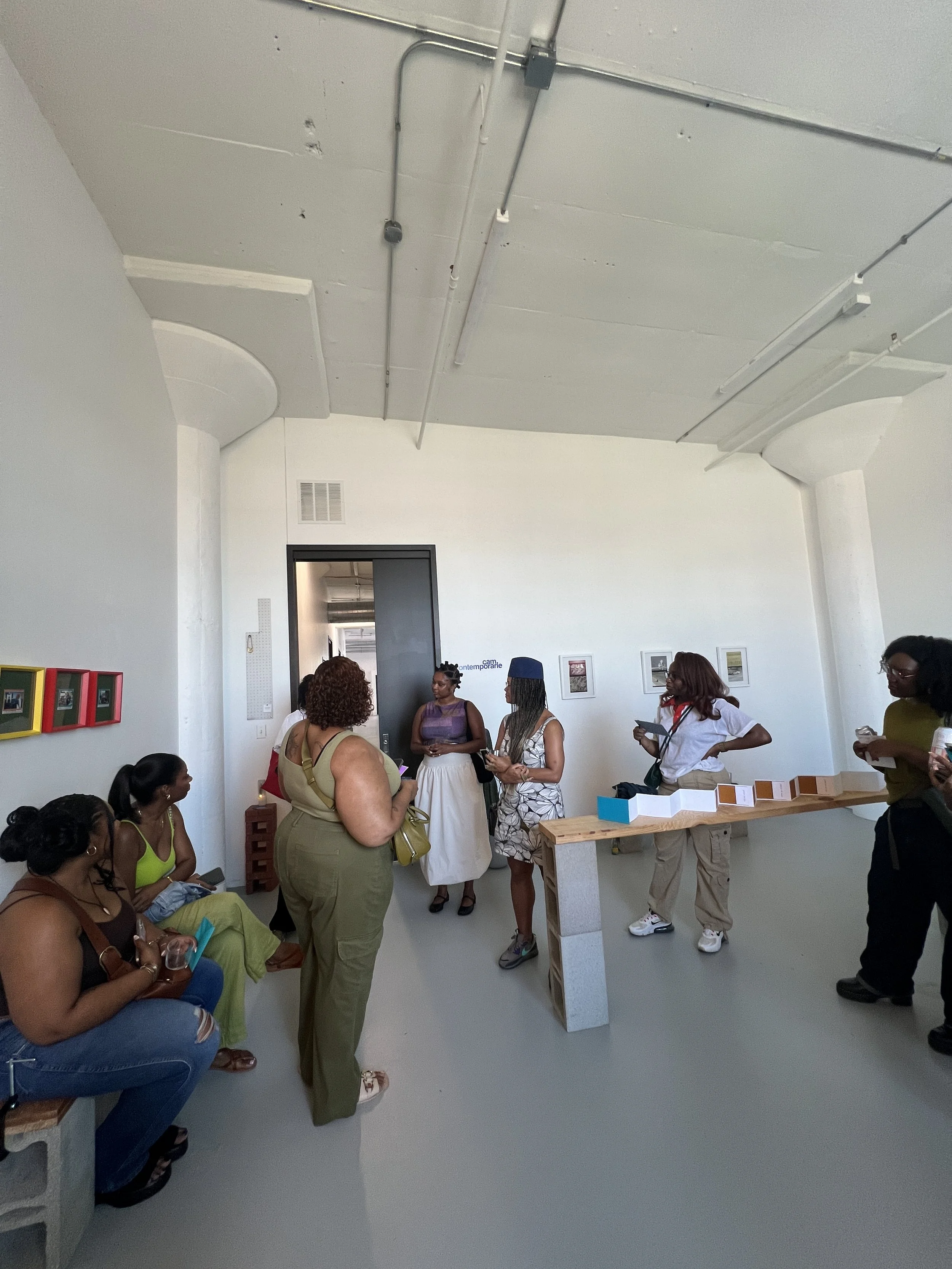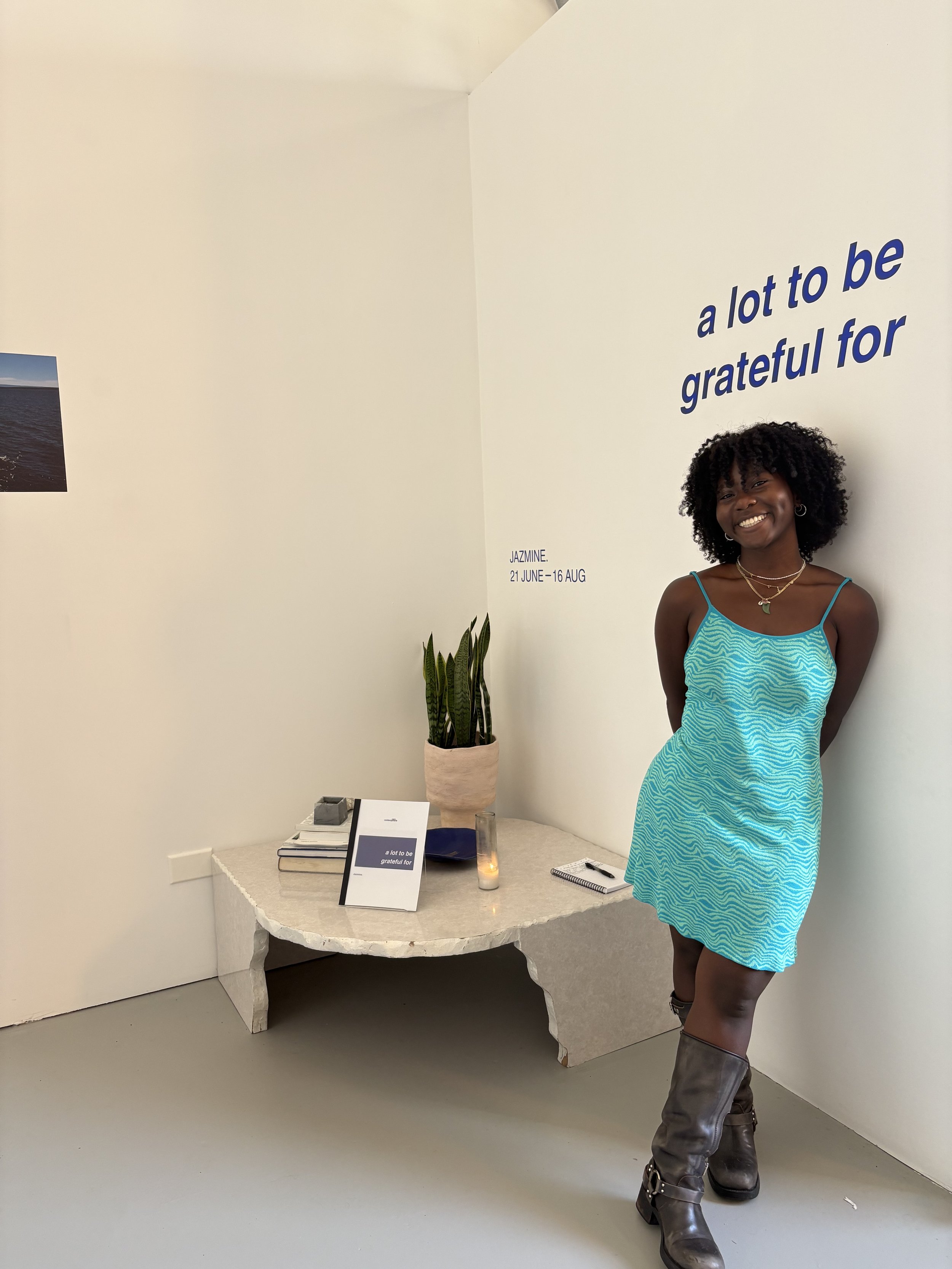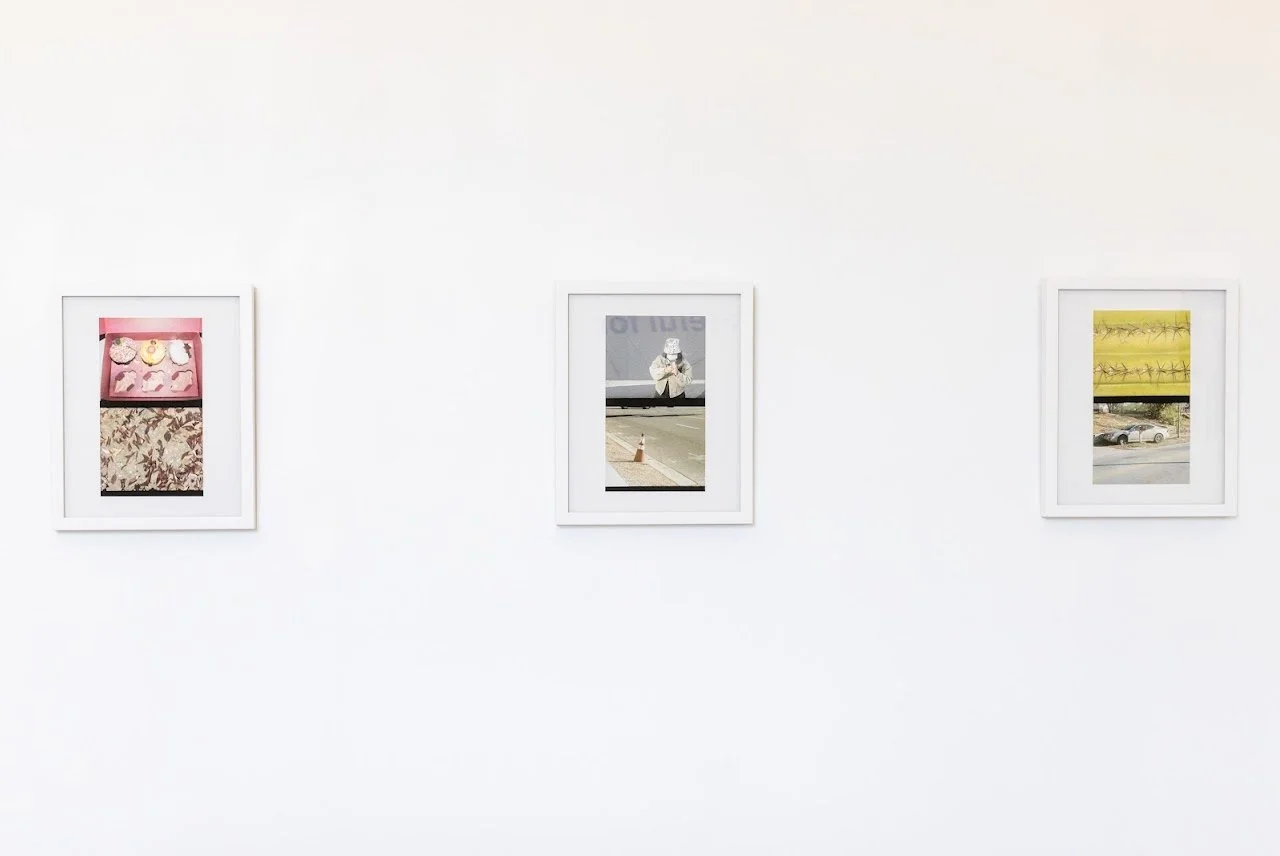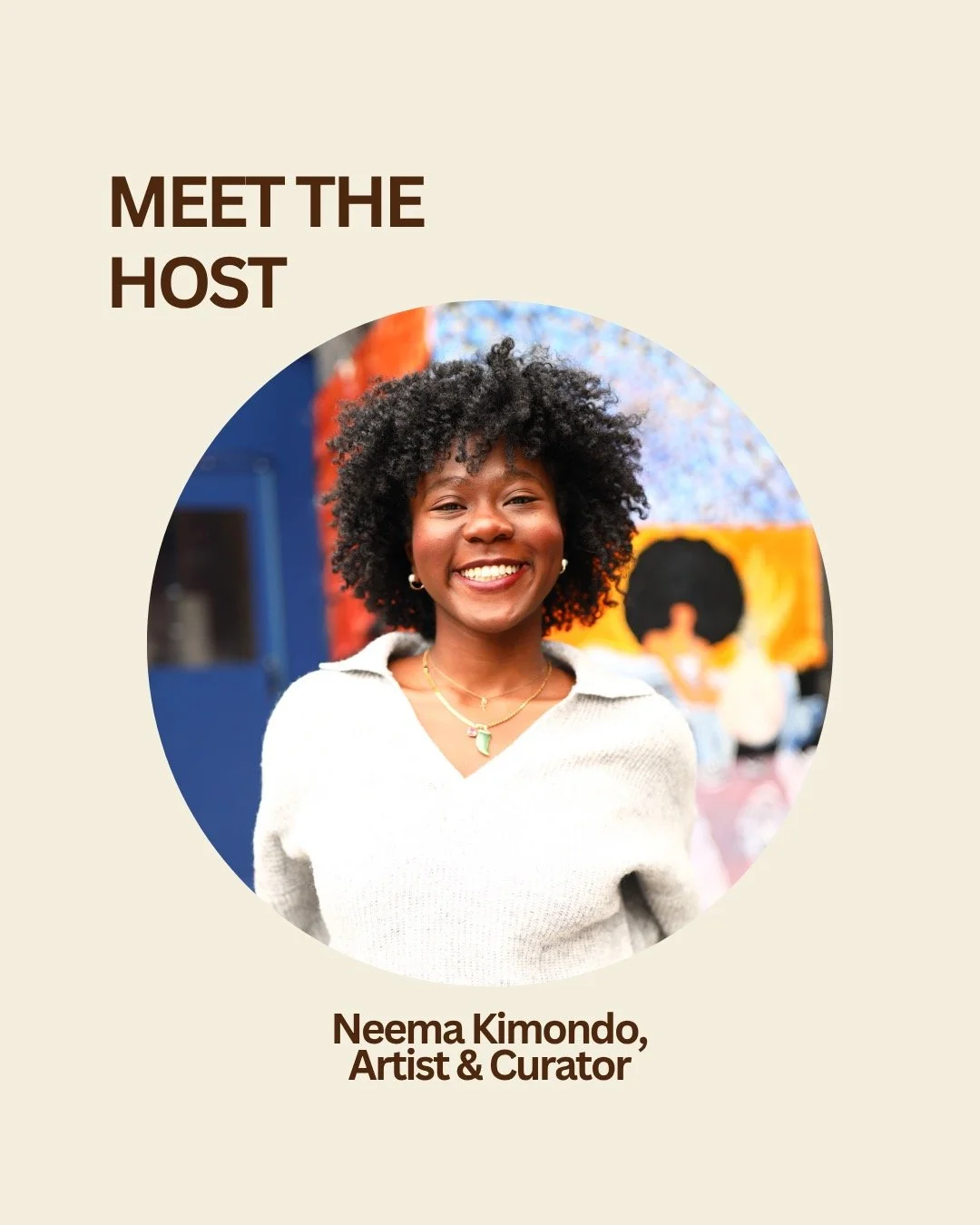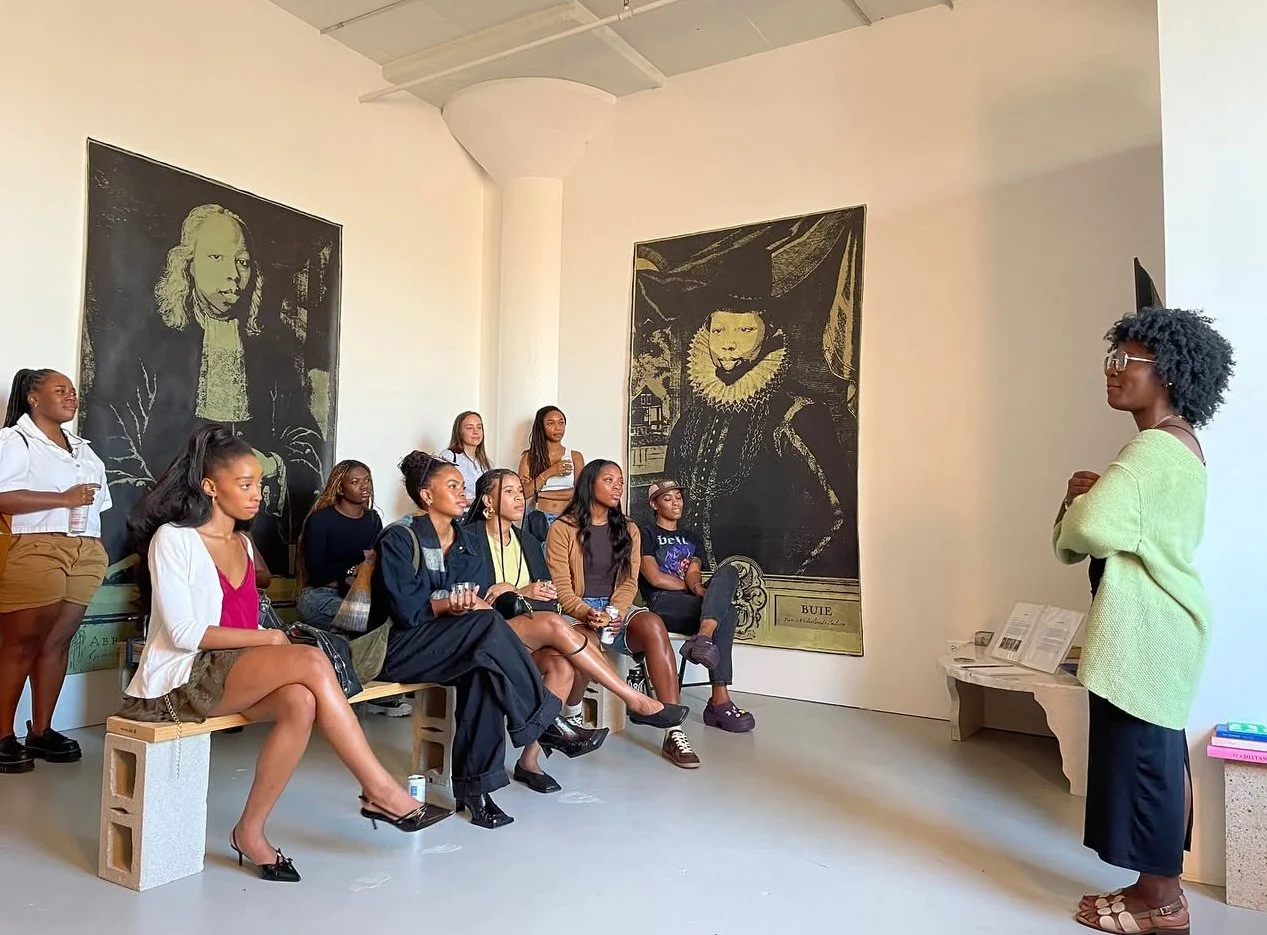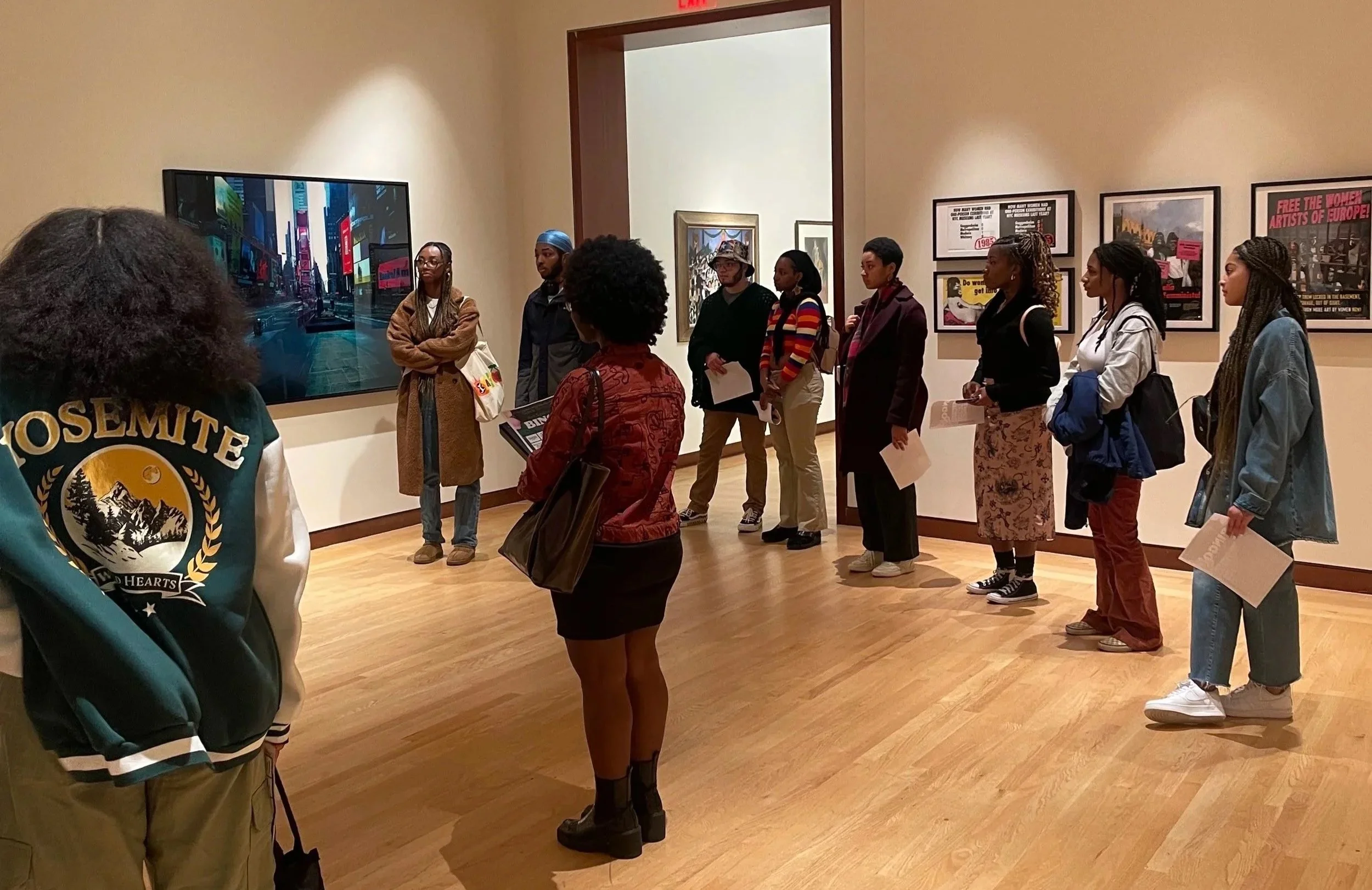𝐁𝐆𝐈𝐀𝐒
Black Girls In Art Spaces Collaborations
Black Girls In Art Spaces (BGIAS) is an initiative founded by Kaci Merriwether-Hawkins, dedicated to connecting Black women, femmes, and nonbinary creatives in art spaces where we’ve historically been underrepresented and undervalued.
Contact & Socials
Instagram & TikTok: @blackgirlsinartspaces & @kacimerriwetherhawkins
I’ve had the privilege of supporting this vision by helping to lead and co-host meetups in both Hartford and Chicago, creating space for conversation, cultural exploration, and reflection through art.
“a lot to be grateful for” by Jazmine.
Completed: July 2025 Location: cam.contemporarie, Chicago
My third BGIAS meetup, a lot to be grateful for, was an intimate photo-based exhibition by artist Jazmine. Featuring 35mm photography, collage, embroidery, and handwritten notes, the show became a space for personal storytelling. Participants engaged in hands-on reflection activities including a Fragments of Memory Wall and a Letter-Writing Station, making space for joy, vulnerability, and connection.
Guided Questions:
What are your initial reactions to Jazmine.’s work?
How does this exhibition use photography and writing to engage with memory—both personal and collective?
Jazmine. often avoids direct portraiture. What does it mean to create a portrait through absence or suggestion?
How do you think the act of gratitude transforms how we document or remember everyday life?
What are the roles of vulnerability and softness in this body of work? How might these be radical or political in their own right?
How does this exhibition relate to your own experiences with archiving memory—whether through journaling, photos, social media, or storytelling?
Activities:
Bring and Share a Photo
Prompts:
What story does this image tell about you?
Why is this image(s) significant to you?
Letter- Writing Station
Visitors write a letter to themselves, a loved one, and/or an ancestor
Prompts:
What do you wish someone told you?
What are you ready to let go of?
Who are you becoming?
“a lot to be grateful for” by Jazmine.
“Revisionist History” by Tyanna J. Buie
Completed: October 2024 Location: cam.contemporarie, Chicago
For my second BGIAS gathering, we toured Revisionist History, a solo show by Tyanna J. Buie. Through deep-fake technology, painting, and digital tools, Buie reclaims colonial-era portraiture to tell bold, Black futurist narratives. The exhibit sparked thoughtful conversation around authorship, memory, and resistance through art.
Guided Questions:
What are your initial reactions to the artwork in the exhibition?
How do you see the theme of colonialism reflected in Buie’s pieces?
In what ways do you think art can contribute to discussions about history and identity?
Are there particular elements in Buie's work that resonate with your own experiences or perspectives?
What does the term “revisionist history” mean to you in the context of contemporary art?
Can you think of other artists or movements that challenge historical narratives in similar ways?
How might the geographical implications of colonialism influence our understanding of art today?
Definitions:
Colonialism - The policy or practice of acquiring full or partial political control over another country, occupying it with settlers, and exploiting it economically
Tools of Colonialism - Politics, Culture, Literature + violence
Post Colonialism - The historical period or state of affairs representing the aftermath of western colonialism
What makes someone a Revisionist/Who is a Revisionist? Someone who examines and tries to change existing beliefs about how events happened or what their importance or meaning is
Reappropriation in Art: Provide context on how artists have historically reinterpreted works to challenge existing narratives and highlight marginalized perspectives.
Afrofuturism: a cultural aesthetic, philosophy of science, and history that explores the intersection of the African diaspora culture with science and technology
Being Seen: People and Places in American Art, 1960s to Today - Mary & George W. Cheney, Jr. Gallery
Completed: March 2023 Location: New Britain Museum of American Art (NBMAA), CT
This inaugural Hartford meetup brought together local Black creatives—including my mentees from Black Girls Achieve—for a guided tour of Being Seen: People and Places in American Art, 1960s to Today. The exhibition explored marginalized narratives through photography, collage, painting, and sculpture. Co-hosted with longtime collaborator and friend Tiana Sharpe, the event was a powerful entry point into broader conversations about representation and artistic visibility.
Guided Questions:
In this exhibition, how do artists like Faith Ringgold, Elizabeth Catlett, or Radcliffe Bailey document their narratives?
Do these works make you feel seen or represented? In what ways?
What role does geography or location play in shaping the people and scenes depicted?
How do different artistic methods (e.g., collage, assemblage, abstraction) affect your understanding of the people or places shown?
How might this exhibition reshape or challenge your view of American history through art?
What does it mean to “be seen” in American art? and who is doing the seeing?
If you could ask one of the artists a question, what would it be?
Activities:
Custom BGIAS Bingo card
Prompts:
Find an artwork that makes you feel seen as a Black girl or woman (Take a Picture).
Talk to another group member about a piece that moved you .
Find an artwork that includes text or words. What do they say?
Spot a piece that uses collage or mixed media. What materials can you identify?
Identify a piece that expresses both struggle and strength.
Locate an artwork that shows or implies spirituality or ancestry.
Idenfity a repeating color, theme, and/or idea .
Hartford Chapter Meetup — NBMAA
